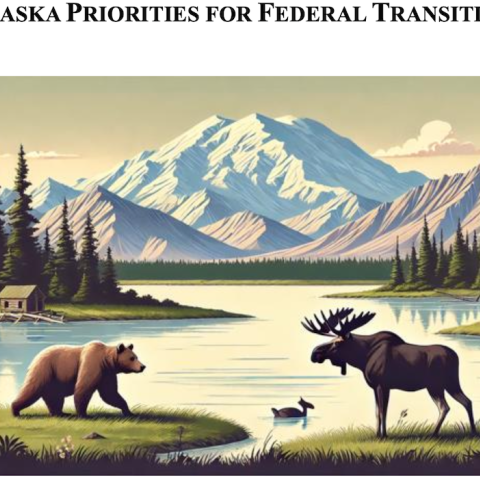
Brown bears fish for salmon at the iconic Brooks Falls in Alaska's Katmai National Park/Kansas State University
Editor's note: The following is an unedited release from Kansas State University.
If you have visited Alaska's Katmai National Park in the month of July, you probably enjoyed watching brown bears fish for salmon at the iconic Brooks Falls.
But what if you saw the same scene on a live webcam? Would you have the same emotional response as viewing the bears in their natural surroundings?
That’s what two Kansas State University researchers want to find out through a live-stream video study of brown bears. Jeffrey Skibins and Ryan Sharp, both assistant professors of park management and conservation, want to answer an important question: Do people have the same emotional connections with animals when watching them through live webcams and in real life?
"Live-streaming cameras are a new and novel technology in the wildlife viewing experience," Skibins said. "Ultimately we want to know how viewers are affected by seeing something online — not having an actual experience, but having the virtual experience of viewing animals in nature. Does it create a conservation behavior action within the viewer? Does it cause people to want to get involved in saving these animals?"
Skibins and Sharp are focusing the study on a "bearcam" that provides live footage of brown bears at locations throughout Katmai National Park, including the iconic Brooks Falls, where salmon jump up waterfalls and bears wait nearby to catch them. Expect more bears in the coming weeks: July is peak salmon season, when more than a hundred bears gather on a mile-long stretch of the Brooks River. It's the best chance to watch bears on camera, the researchers said.
"Live-stream videos can become alternate ways to experience a national park," Sharp said. "We want to engage people, perhaps in urban environments who may not have access to Alaska, and we want to know what that means for the park resources, for the animals, for the ecological conditions and for the visitor experience."
The project could revolutionize conservation efforts and could help national parks create visitor opportunities that reach global audiences who may not be able to travel to national parks. The project also can help park managers develop new ways to prevent visitor overcrowding at national parks.
The project involves the multimedia organization explore, which has set up cameras at parks throughout the world, including the "bearcam" at Katmai National Park. Other cameras offer live footage of tigers, eagles, pandas and fish. The cameras are extremely popular and garner millions of hits from viewers across the world, Sharp said.
Skibins and Sharp joined forces to study if virtual viewers and real-life viewers have the same emotional responses to the brown bears at Katmai National Park. Skibins' research focuses on conservation psychology while Sharp studies ways to help parks manager run national parks.
The researchers are collecting data in two ways:
1. Video experience: The researchers are asking online viewers to fill out an online survey after watching the bears on the live stream cameras.
2. Live experience: Sharp is spending several days at Katmai National Park and surveying real-life visitors after they have viewed the bears at one of the park's viewing platforms.
The survey contains the same questions for both real-life and virtual visitors. Skibins and Sharp will compare the two sets of survey data to understand the differences in people's emotional responses. The questions cover topics such as conservation caring — a scale that shows a person's connection with nature — and environmental psychology theories that determine if a person holds core values around preserving wildlife.

Two Kansas State University park management and conservation researchers are using a "bearcam" at Katmai National Park in Alaska to study people's emotional connections with nature. The "bearcam," provided by multimedia organization explore, offers live video footage of bears at several locations in the park/Kansas State University
The survey also looks for new ways — beyond giving money or volunteering — for parks to use web-based technology to engage global audiences. For example, the research could help park managers develop ways for virtual viewers in Brazil to engage in conservation efforts that help the brown bears at Katmai National Park, Skibins said.
"This reach and technology can really personalize the experience and allow a visitor — whether virtual or real — to be engaged in something that may be five continents away," Skibins said. "It is an exciting new way to explore how people can access their national parks and wildlife around their country and around their world."
Skibins and Sharp launched the project in the spring and will be collecting data for several years. While the researchers are focusing this first study on bears, they want to expand future studies to include live stream videos of other animals, such as giraffes, elephants or birds.
The project has received financial support from the university's horticulture and natural resources department and K-State Research and Extension.



 Support Essential Coverage of Essential Places
Support Essential Coverage of Essential Places







Comments
I'd like to see a third component compared: zoos.
Interesting project! Having been to Katmai in summer, and having observed wildlife in Yellowstone and Africa among other places, I have to say that for me there is nothing like the thrill of being close to wildlife in person, in the wild. However, I am a big fan of webcams because they can potentially bring a part of that thrill to anyone, and they can be a great educational resource. Looking forward to hearing the results of this research.